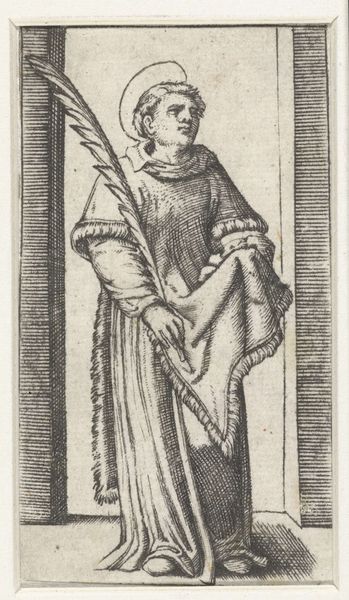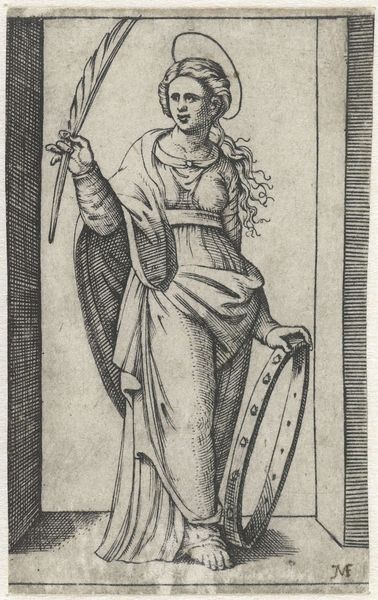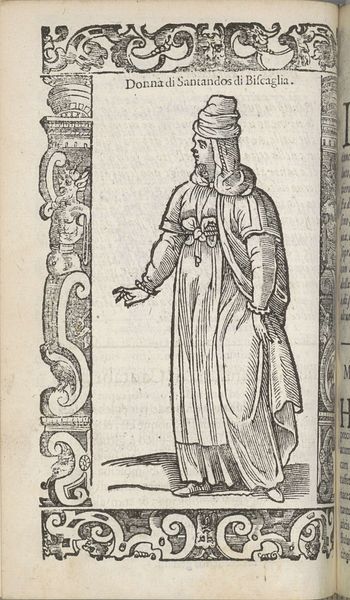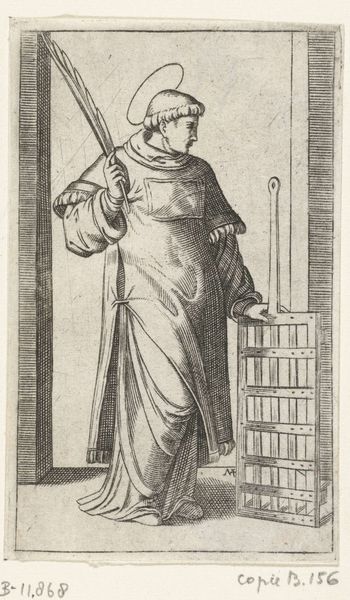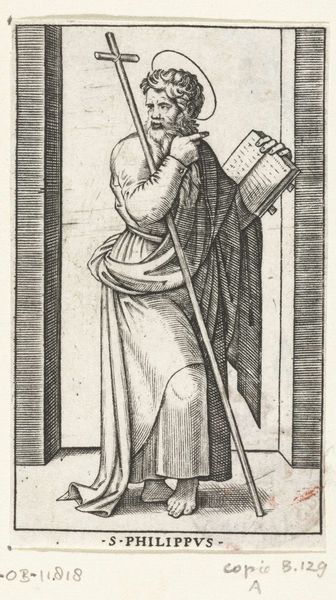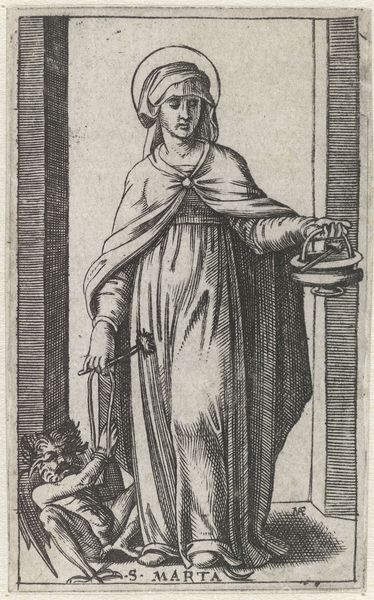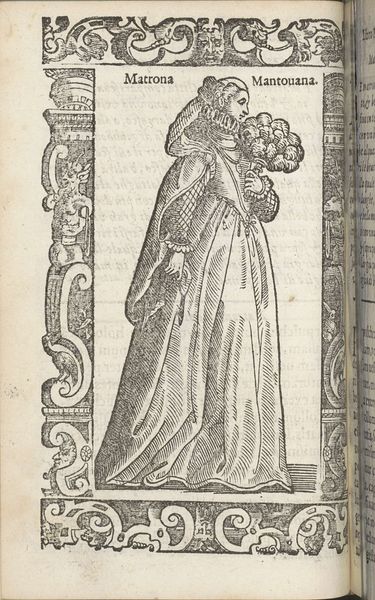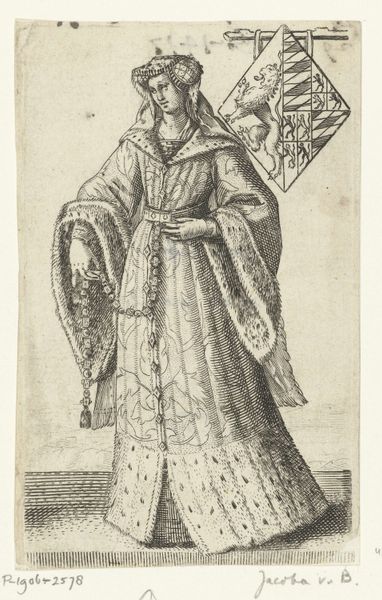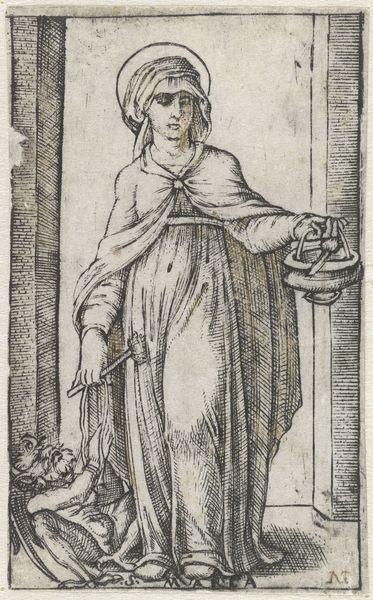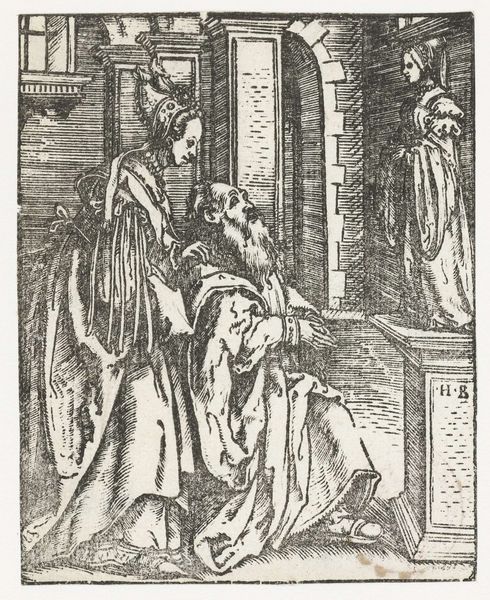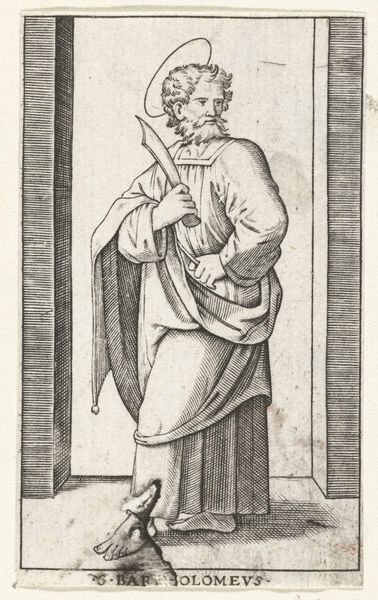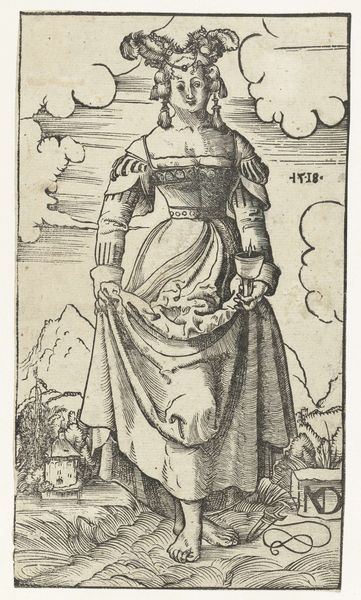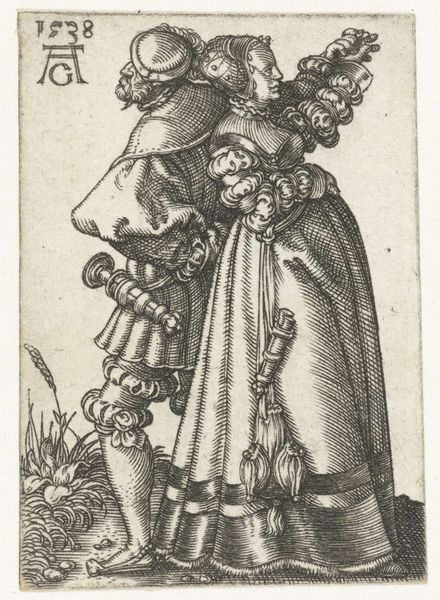
print, woodcut
#
medieval
# print
#
figuration
#
ink line art
#
woodcut
#
history-painting
Dimensions: height 70 mm, width 45 mm
Copyright: Rijks Museum: Open Domain
Curator: Here we have a woodcut titled "Man met een scepter," which translates to "Man with a Scepter," dating back to around 1500 and created by an anonymous artist. Editor: There’s a haunting stillness to this piece. The figure, seemingly trapped in this rigid architectural space. It evokes a sense of formality and maybe even some sadness? Curator: Interesting you say that. The material itself, the woodcut medium, allowed for relatively mass production of images. It was a practical way to disseminate imagery in a society where access to finer art and certainly literacy was limited. This impacts its reception; this image could have been used as religious propaganda, perhaps a historical document for social and political instruction. Editor: The scepter immediately signals authority. What’s striking is that it seems so fragile and thin! The delicate construction clashes with the imposing figure, and his averted gaze and outstretched hand; there's an uncertainty suggested despite his station. And then there is the looming city outside of that other arch. Curator: Absolutely. Looking closer, we can note how the artist utilized the limitations of the woodcut medium itself. Notice the stark contrast between black and white, creating depth. There’s the intentional labor, the physical carving that shaped the final print we have. Also consider its affordability allowed for greater engagement from different parts of the social strata. Editor: I am intrigued by that barred window in the distance that almost appears prison like. I suppose the use of symbolism can provide us clues about the function this scepter possesses for him and by proxy the symbolic implication of freedom against restriction that has implications for cultural shifts. Curator: Exactly. Thinking about material history reminds us to examine not only the aesthetic impact, but its intended purpose within society. The medium as both method of art and of propaganda; two functions perhaps not so distinct. Editor: Seeing how our discussions intertwine is particularly captivating as we examine how even through a simple woodcut, a spectrum of cultural and emotional resonances begin to appear, reminding us that art, regardless of accessibility, carries echoes from that period that time cannot bury.
Comments
No comments
Be the first to comment and join the conversation on the ultimate creative platform.
